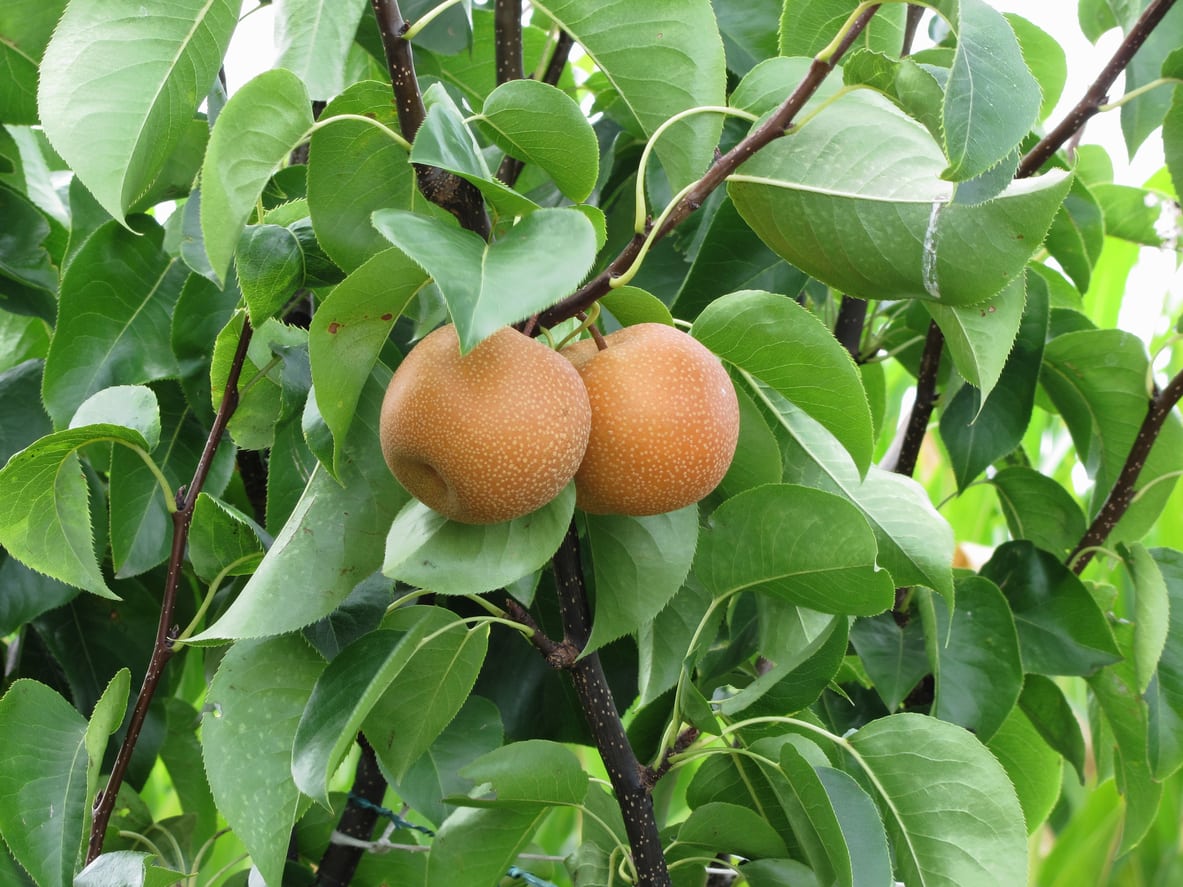Asian First Pear Information – Learn About Asian Pear Ichiban Nashi Trees


There is something unique and wonderful about the sweet, snap of an Asian pear. Ichiban Nashi Asian pears are the first of these eastern fruits to ripen. The fruits are often called salad pears because the crunch and flavor add life to fruit or vegetable bowls. The Asian pear Ichiban Nashi ripens as early as late June, so you can enjoy its crispy, refreshing taste along with many of your favorite early summer fruits.
Asian First Pear Information
Asian pears prefer temperate climates but can thrive in cooler regions. What is an Ichiban Nashi pear? Ichiban Nashi Asian pears are also known as first pears because of the early arrival of ripe fruit. They originated in Japan and can be grown in United States Department of Agriculture zones 5 to 9. It is said the fruit doesn't keep much longer than two months in cold storage, so it is best to enjoy them fresh when they are in season. The tree is very productive and grows at a medium rate. Like most pomes, Asian pear trees need a chilling period to stimulate spring growth, flower production and fruit development. Ichiban Asian pears need 400 hours of chilling at 45 degrees Fahrenheit (7 C.). Mature trees can grow 15 to 25 feet (4.5 to 7.5 m.) tall but can also be kept smaller with pruning or there are dwarf varieties of the species available. The tree requires a pollinating partner such as Yoinashi or Ishiiwase. This Asian pear is known as a russeted variety. While the fruit more closely resembles an apple, it is a true pear, although a rounded version. The russeting is a brownish, rust color on the skin which may just affect a small area or the entire fruit. The pears are medium sized and have crisp flavor. The flesh is creamy yellow and has a delicious resistance when bitten into while still carrying a mellow sweetness. While these pears don't have a long cold storage life, they can be cored and sliced to freeze them for baking or sauces.
How to Grow Ichiban Nashi Trees
Asian pear trees are tolerant of a range of conditions but prefer full sun, well-draining, slightly acidic soil, and average fertility. Keep young plants moderately moist as they establish. It is important to trees at installation. Use a stake if necessary to keep a strong straight leader. Select 3 to 5 well-spaced branches as the scaffolding. Remove the rest. The idea is to create a main vertical stem with radiating branches that allow light and air into the interior of the plant. The best time to prune is late winter to early spring. Fertilize in April annually with a fruit tree food. Keep a watch for disease and insect activity and take steps immediately to protect your tree's health.
Gardening tips, videos, info and more delivered right to your inbox!
Sign up for the Gardening Know How newsletter today and receive a free copy of our e-book "How to Grow Delicious Tomatoes".

Bonnie Grant is a professional landscaper with a Certification in Urban Gardening. She has been gardening and writing for 15 years. A former professional chef, she has a passion for edible landscaping.
-
 Grow ‘Karl Rosenfield’ Peony Plants For The Ultimate Frilly Border Beauties And Cut Flowers
Grow ‘Karl Rosenfield’ Peony Plants For The Ultimate Frilly Border Beauties And Cut FlowersFor frilly double magenta peony petals infused with a heady fragrance, grow ‘Karl Rosenfield’ peony plants. Here’s how to cultivate the ultimate plushy blooms
By Tonya Barnett
-
 10 Common Composting Problems That Can Spoil Your Garden Gold – Plus Easy Fixes
10 Common Composting Problems That Can Spoil Your Garden Gold – Plus Easy FixesLearn how to troubleshoot common composting issues before they ruin your stash – from bad smells and bugs to materials not breaking down as they should.
By Susan Albert